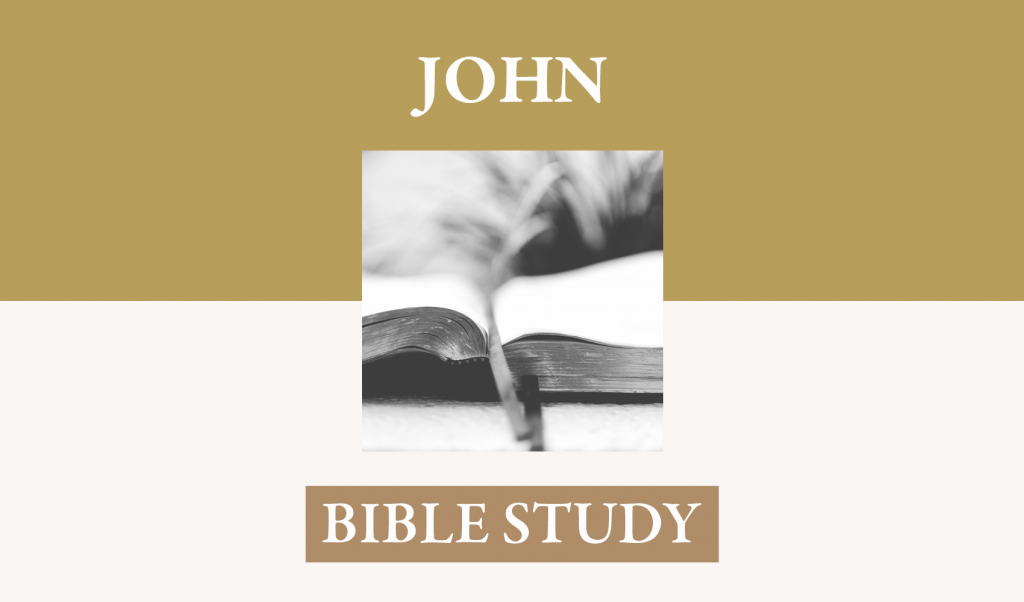Blind Unbelief | John 9
I. The Situation
Jesus saw a man who could not see, a man born blind (9:1). His interaction in this event constitutes the sixth sign of John’s Gospel. Jesus healed many blind people. There are several specific events along with some general narratives in which Jesus healed the lame, the mute and the blind and all manner of diseases. (Matthew 9:27-31; 12:22; 15:30, 31; 21:14; Mark 8:22-26; 10: 46-52; Luke 7:21, 22) In Luke 7 Jesus points to this fact as an indication that he was Messiah when John the Baptist sends men to question Jesus. According to Exodus 4:11, God makes man either seeing or blind. Restoring of sight to the blind is a messianic activity (Isaiah 29:18; 35:5; 42:70).
A. There is no statement of time or place, but only the recording of the incident. It probably is sometime after the attempt to stone Jesus (8:59), and we detect the growing hostility toward him in the way this man is treated. Note the mounting frustration and hostility in 9:34, “You were born entirely in sins, and are you teaching us?”. Jesus took notice of him, and perhaps made a statement that he had been blind from birth; alternatively, the man perhaps was known to many because of the unusual circumstance of his having been blind from birth. This probably had led to his being sent out as a beggar from early childhood perhaps even by his parents.
B. The situation provokes a question of cause (verse 2). The disciples shared the assumption of the religious teachers that physical imperfection meant that God was judging some specific personal sin. No suffering without iniquity was the accepted viewpoint. This is not entirely unwarranted, for Jesus Himself indicated this as operative in the lame man in John 5. But Job clearly teaches us that, though we all deserve chastening at any time of life, suffering does not mean that the sufferer has done something that distinguishes his sin far beyond that of others, even though his three visitors argued insistently for that viewpoint. Having been born blind, however, does pose a dilemma for the common aphorism. How could he have sinned before birth?
C. Jesus responds to the natural query about purpose in such a significant situation (verses 3, 4).
1. Jesus points not to a prior cause in the person of the man or his family but a particular purpose of God. God had designated the affliction so that Jesus might give another strong evidence of who he was and further demonstrate the sinful and adamantine resistance of the religious elite of Israel.
2. He aligns himself with this divine purpose immediately to “work the works of Him that sent me.” Jesus identified his work with the work and purpose of the Father. As we view natural cause and effect relationships in the world, this healing qualifies as a miracle. For Jesus, however, he sees it as a mere continuation of the work that the Father does. He upholds all things from moment to moment and can give sight in an instant without any alteration in or special exertion of power that he is not already manifesting in the world.
D. Action of the Creator 5-7 –
1. This miracle gave concrete illustration of the spiritual claim made by Jesus that he is the light of the world (8:12). He repeats that claim in verse 5 as a prelude to the healing. This claim puts the event in the framework of creation in which the Son of God spoke and said, “Let there be light” (Genesis 1:3) and also teases out the theme John announced in John 1:3-5: “All things were made by him and without him nothing was made that was made. In him was life and the life was the light of men. And the light shines in the darkness, and the darkness did not apprehend it.”
2. Jesus employs the symbol of creation by performing this miracle through the use of dirt. As God formed Adam from the dust of the ground, breathed into his nostrils the breath of life, so Jesus uses the very ground to give sight.
3. He required an action of the man that would imply a trusting attitude on his part. Perhaps we do not recognize it as clearly, but the entire deportment of this man throughout the situation is a part of the miracle. Though physically blind, he is the only participant in the consternation following his healing that sees clearly and logically the implications of this event. He is drawn to a final posture of faith and worship. Of him it can be said, as Paul wrote of himself, “For it is the God who commanded light to shine out of darkness, who has shone in our hearts to give the light of the knowledge of the glory of God in the face of Jesus Christ” (2 Corinthians 4:6).
E. His seeing caused a sensation among neighbors and acquaintances (8-12).
1. A man that had never seen anything now sees. The change seemed so incredible that some of his acquaintances did not believe it was he.
2. He stated clearly, however, that he was indeed the man that they had seen begging because he was blind. He recounts the event with a simple statement of the facts (11, 15, 25). There is no need to embellish an event like this. Nothing of mere imagination or attempt at sensationalism could expand the startling reality of a life lived completely in dark blindness immediately opened. For the first time, through the eyes, his brain is flooded with the beauty and wonder of light and all of the things that it reveals of form order, symmetry, proportion, color, shape, contour, shades, the shapes of animals and men, the color of eyes, the beauty of faces and limbs, the amazing knowledge contained in pages of writing.
II. The interaction reveals a contest between blind Authoritarianism and the undeniable light of evidence.
A. The Dominant Authoritarian. We find the common people who had seen and knew this man as a blind beggar startled and frantic to know how this had happened. The now-seeing man told them that it was done by the “man called Jesus” (11). They brought the man to the Pharisees for their expert doctrinal analysis of what had happened.
1. They absolutized their personal theory—not the true biblical teaching–about what kind of work violated the Sabbath (13-16).
-
-
- They inquired about what method Jesus used to heal the man and learned that he had made a salve from the dust of the earth with his spittle. This involved a purposeful effort of combining tow elements, working them together, and then applying them to a surface. This combination of activities violated their rules about Sabbath labor.
- Though he has done a divine and Messianic work, some will not accept the evidence because of a misshapen tradition about the Sabbath. Instead of recognizing that he had done something truly divine, they concluded he is “not from God” because he had ignored their hedge around the law.
- Some of the Pharisees, however, looked at the remarkable train of events and pressed toward the more defensible conclusion that Jesus could not be a sinner and thus unheard by God, for what had been done was explainable only as a manifestation of divine power.
-
2. Now the Pharisees sought a way to avoid or minimize the evidence (17-19).
-
-
- They began by asking the man himself what he thought. He responded to the work as the woman of Samaria had responded, “He is a prophet” (cf. 17; 4:19).
- Perhaps it was not so great a miracle after all; perhaps the man was not born blind (18). His sight had not been restored but was always present. No matter the unanimous testimony of the man’s neighbors and the man himself, their prejudice drove them to irrational doubt.
- Check the parents and find out. The manner in which they question the parents casts doubt on their knowledge and veracity from the beginning. “Is this your son who you say was born blind? Then how does he now see?” They had been told by the man himself. Their hatred of Jesus blinded them to the truth.
-
3. The Pharisees continued their tactic of intimidation (20-23) – The parents told the Pharisees that this is their son and that he was indeed born blind. The facts now had been verified from three sources and all of the most intimate kind of knowledge—neighbors and townspeople who had years of observation, the man himself, and his parents. The parents, however, knowing their known threats concerning Jesus made them go no further, but place the burden of inference from the fact back on the shoulders of their son (21, 23).
4. They return to the man himself and tell him to give no credit to Jesus for the healing, but rather glorify God.
-
-
- They thus confess that only God could do this, but they refuse to believe even as they have continued to do (See 8:42-54). The Pharisees employ the language of piety but falsely grounded (24). Their blindness is such that they feel they can honor God and not honor the Son.
- The man professes ignorance of the reasoning that makes the Pharisees reject Jesus, but again states the irrefutable evidence of his divine power—“I was blind, now I see.”
- They ask again as to how Jesus opened his eyes. They have consented to the constant testimony that Jesus opened his eyes. Now, “How?”
- Flummoxed at the persistent incredulity of their questioning process, he asked if they want to become his disciples (27).
-
5. They seek to overcome his statement of the events by assuming a position of spiritual superiority (28-34).
-
-
- His insistent recitation of the facts challenges them to the point of agitation (28-29). They appeal from Jesus to Moses. As disciples of Moses, they should have welcomed the appearance of Jesus and become his disciples, but they show their ignorance of Moses by their criticism of Jesus. Moses spoke of the “prophet like me from your brethren” (Deuteronomy 18:15 and Acts 3:22). Also, as Peter preached at Pentecost, Jesus of Nazareth was “a man attested by God to you by miracles, wonders, and signs” (Acts 2:22) even as Moses was before Pharaoh.
- His challenge to their failure to see Jesus as a servant of God is amazing to him (30). He knew enough of the Scripture and the ways of God in verifying his messengers that his own healing should be more than a sufficient sign that Jesus was from God.
- They can only bluster their way above his forceful logic by an oppressive dismissal of his testimony and his self-evident logic. They move back to the idea that began the entire event in the first place by saying that his blindness was an evidence of unvarnished sin. How could he dare instruct them when he had been born blind? (34)
- My, what compassion these religious pundits had and how sincerely they shared the joy of this life-changing restoration of sight! Here they demonstrate that not only do they not love God, but they also despise their neighbor. They could not believe, for they are so filled with hate.
-
6. Their might becomes the truth (34b). Rather than listen, consider, and draw the right conclusion, they exert their authority and “put him out” (34, and see 22). How many times has this fallen world demonstrated that one need not be right, if he only has might?
B. Evidence and Truth
1. The opponents of Jesus were blocked by the existence of a fact abundantly verifiable, of a supernatural character [What are the various aspects of evidence for this event?] Does its apparent uniqueness mean that the evidence is less compelling?
2. The miracle was specifically designed for the support of a claim – “I am the Light of the World” [cf. miracle of Mark 2:1-12].
3. Simple, unbiased testimony came from several sources including an irrefutable source as mentioned above. This shows that unbelief is not the product of a lack of evidence but of a morally depraved nature that has no fear of God.
4. Compelling conclusion 30-33 – The argument of the blind man, certainly unschooled in these matters, but following those intuitions of cause and effect and the relative connections of goodness and holiness with a compassionate display of power were far too much for the Pharisees to bear.
III. Division between Belief and Unbelief (35-41).
A. The blind will see (39; Jesus displays the irony of the contrariness of the physical to the spiritual).
1. Ready to Believe: “Do you believe in the Son of Man? … Who is he Lord, that I may believe (35).
-
-
- The content of the question was direct and Messianic in nature [“Son of Man” is the best supported reading, not “Son of God.”] The theological implications are quite important, for the Son of Man, a messianic title, has done that which only God can do. His lowly and despised appearance hid the true dignity and holiness of his humanity and the infinite glory of his deity.
- The response was direct, immediate, and consistent with the content.
-
2. Revelation to the soul – Jesus’ words had to do with more than physical healing.
3. Worship – “’I believe, Lord;’ and he worshipped him’` (38). This verse captures the substance of this lengthy and vigorously narrated event.
4. The now-seeing beggar had no vested interest in religious power or channels of money – His actions reveal a transparency of reasoning that sought truth even at the cost of being cast out (34).
B. Those that see will become blind.
1. The Pharisees, demonstrated a deep unawareness of need; “We are not blind also, are we?” (40)
2. They are self-righteous and thus they will appear before God in such righteousness, which is guilt itself (41) “We are Moses’ disciples,” and that very fact severely aggravates their guilt and, apart from the gracious intervention of saving grace, their condemnation.
IV. Thoughts
A. Christologically – Although many of his signs have implied that Jesus is divine, the symbolism of his action in healing through use of dirt show his assumption of the position of Creator. It is from dust he has made us, and Jesus shows that his use of dust to bring about light and life to dark and dead eyes is a plain manifestation of deity and his status as Messiah. John’s early observation, “All things were made by Him, and without Him was not anything made that has been made. In Him was life, and the life was the light of men.” (1:3, 4) is given historical demonstration in this event. Jesus provokes and accepts worship; He identifies himself as Son of Man as a direct claim to Messiahship (Dan.7:13-4).
B. Nature of Faith – Faith always is an appropriate response to the compelling nature of truth, but only comes about when we are stripped of antithetical predispositions, sinful biases, self righteousness and see ourselves as the beneficiaries of sovereign goodness.
C. Unbelief always involves some element of self-righteousness. We refuse forgiveness because we resist concluding that we are sinners. We refuse to unite with Jesus’ atoning death for we refuse to believe that we are lawbreakers under a verdict of death.
D. The wielding of pure authoritarianism reveals a fear of truth; compliance with such tyrannical mendacity uncovers a cowardly spirit. Sometimes discoveries of truth put one outside the belief box of those in power. They will use their position to silence you without a fair hearing; sometimes those who could help and already share your understanding will love the power and influence of your antagonist more than the truth you have embraced.
E. Discipleship means following the truth as it is in Jesus—who is the Way, the Truth, and the Life—in spite of the immediate consequences with the confidence of eternal glory (38).




















